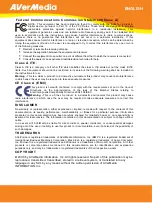
Operating Instructions
Symptom
Cause and solution
Reference pages
Images are in black and white
• Is the unit in night mode?
→ In night mode, output will be in black and white.
Operating Instructions (PDF)
→ “Camera menu items”
→ “PAINT”
→ “DAY/NIGHT”
Operating Instructions (PDF)
→ “Web screen configurations”
→ “Image screen [Image/Audio]”
→ “Paint screen [Paint]”
→ “BRIGHTNESS”
→ “GAIN SETTING”
→ “DAY/NIGHT”
Auto white balance
adjustment (AWB) is not
possible
• Is the unit in night mode?
→ Auto white balance adjustment (AWB) is not possible in night mode.
Operating Instructions (PDF)
→ “Camera menu items”
→ “PAINT”
→ “DAY/NIGHT”
Operating Instructions (PDF)
→ “Web screen configurations”
→ “Image screen [Image/Audio]”
→ “Paint settings screen [Paint]”
→ “BRIGHTNESS”
→ “GAIN SETTING”
→ “DAY/NIGHT”
The screen is too bright in
night mode
• The aperture is set to open in night mode to prevent video voyeurism.
Adjust the brightness at the light source.
Operating Instructions (PDF)
→ “Manual shooting”
→ “Manually adjusting the iris”
The iris does not operate in
night mode.
The subjects appear distorted
• Since this camera uses an MOS imaging device, the pickup timing
differs slightly at the top left and bottom right of the screen. This
means that if a subject moves quickly across the front of the camera,
it may appear slightly distorted. This is not a malfunction.
– – –
When the flash is fired during
shooting, only the top or
bottom of the screen becomes
lighter
• With a MOS imaging sensor, the pickup timing differs slightly at the
top left and bottom right of the screen. This means that when the
flash is fired, the bottom of the screen will become lighter in the field
concerned and the top will become lighter in the next field.
This is normal and not indicative of any problem.
– – –
The brightness changes
cyclically or the colors
change, and horizontal stripes
can be seen passing across
the screen
• These phenomena (flicker) may occur under the illumination produced
by fluorescent lighting, mercury bulbs or other types of discharge
tubes. In such cases, we recommend setting the electronic shutter
speed to 1/100 in regions with 50 Hz power supply frequency, and to
OFF in regions with 60 Hz power supply frequency.
– – –
When fine lines or cyclical
patterns are shot, flickering
is seen or coloring is added
to them
• This phenomenon occurs because the pixels are arranged
systematically on each image sensor. It is noticeable when the spatial
frequency of a subject and the pixel pitch are brought into proximity
so change the camera angle or take other action.
– – –
Noise occurs in the audio
input
• The following causes are possible.
‑ The camera, switching hub, or peripheral devices are not grounded.
‑ Power lines are running nearby.
‑ Equipment generating strong electric or magnetic fields (e.g., television
and radio antennas, air conditioning motors, power transformers) are
located nearby.
If the problem cannot be resolved via movement of surrounding devices,
use a microphone equipped with an amplifier, or connect an audio output
with low output impedance.
page 27
58
59
Troubleshooting (continued)






































